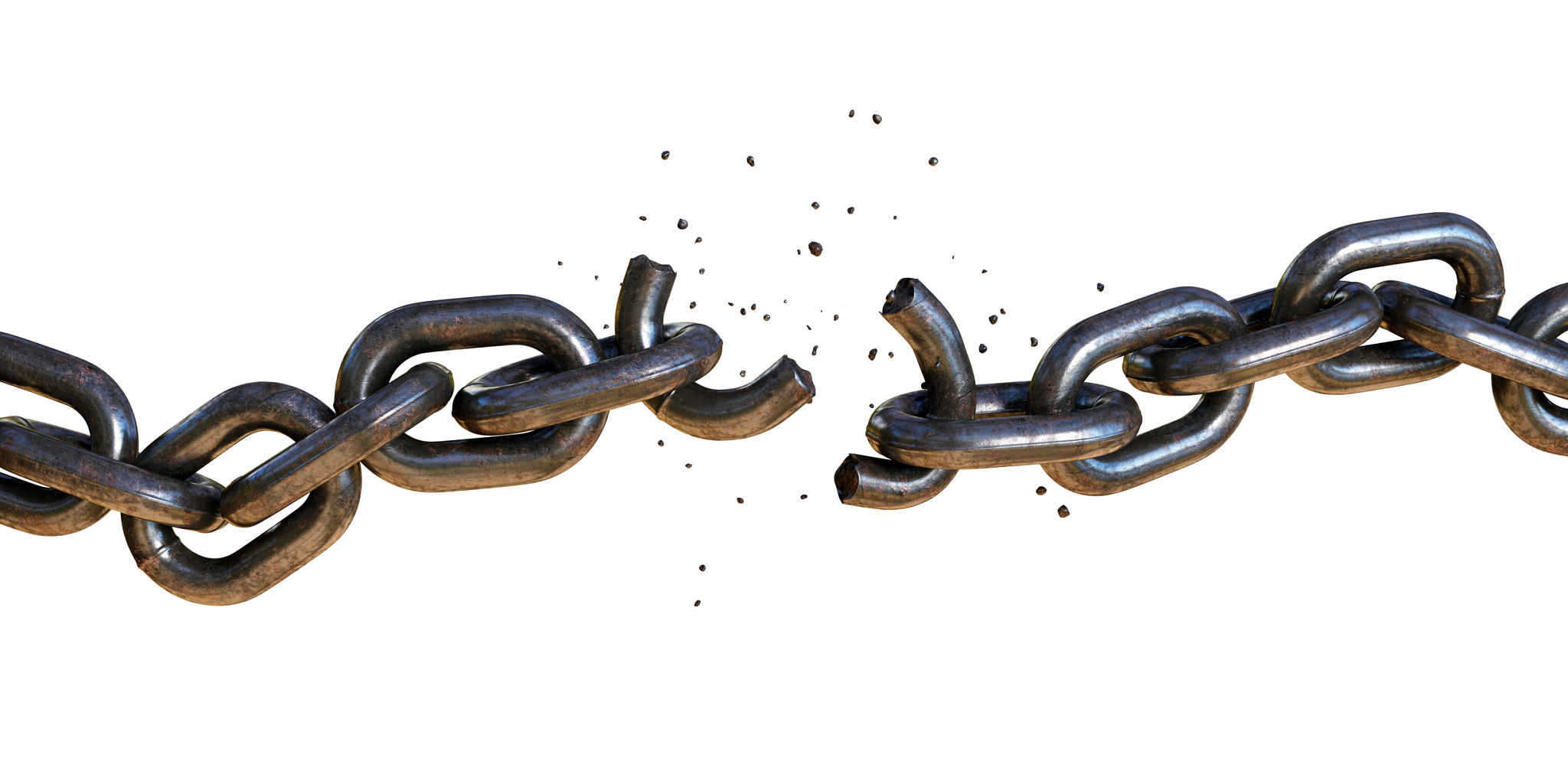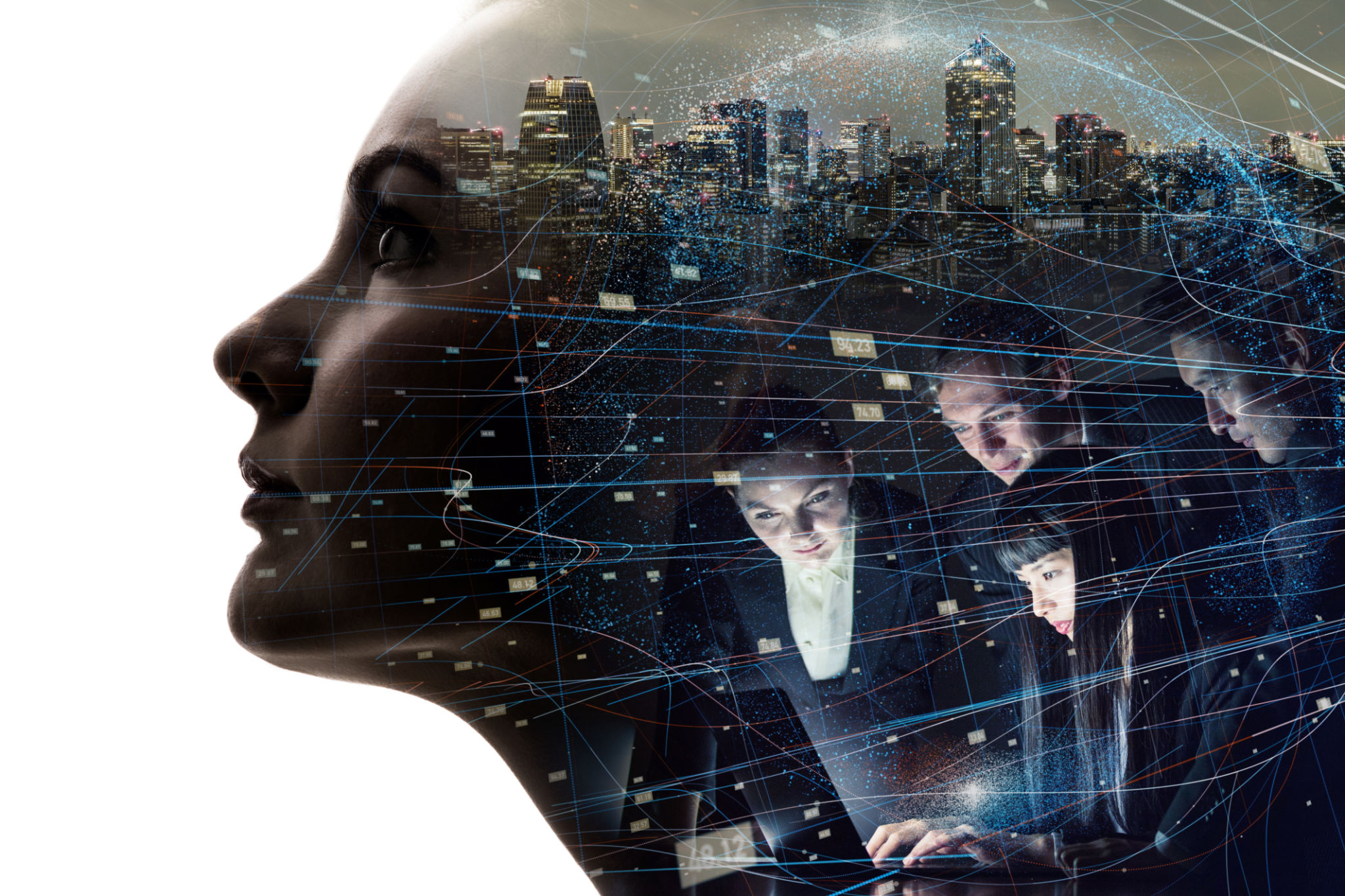Breaking Free: The Psychology of Labels and Self-Fulfilling Prophecies
Understanding How We Become What Others See, and How to Transcend Those Limitations
The Monkey’s Dilemma
“I’ll stop treating you like a monkey when you stop acting like a monkey.”
“I’ll stop acting like a monkey when you stop treating me like a monkey.”
And around and around it goes, like that.
This simple exchange captures one of the most profound and destructive patterns in human psychology: the recursive feedback loop of labeling. In this circular dance of expectation and behavior, both parties become trapped in a prison of mutual reinforcement, where each person’s actions validate the other’s assumptions, creating an endless cycle that can persist for years, decades, or even generations.
The monkey analogy illuminates a fundamental truth about human nature: we are deeply social creatures whose sense of self is profoundly shaped by how others perceive and treat us. When someone consistently treats us as less capable, less intelligent, or less worthy, we may unconsciously begin to embody those expectations. Conversely, when we expect the worst from others, we often behave in ways that elicit exactly those behaviors we anticipate.
Consider the teenager labeled as “rebellious” by frustrated parents. The parents, expecting defiance, respond with increased restrictions and suspicion. The teenager, feeling distrusted and constrained, acts out in ways that seem to confirm the parents’ fears. Neither party recognizes their role in perpetuating the cycle; each sees only the other’s confirming behavior.
This dynamic extends into every corner of human society. In corporate environments, an employee labeled as “lacking executive presence” may find themselves excluded from important meetings and decisions. Deprived of opportunities to demonstrate leadership, they may become more hesitant and deferential, appearing to validate the original assessment. In educational settings, a student identified as “not college material” may receive less challenging coursework and reduced encouragement, eventually internalizing these limited expectations and achieving at lower levels.
The power of this phenomenon lies in its invisibility. Both parties genuinely believe they are responding to objective reality rather than creating it. Breaking this cycle requires recognizing that behavior and identity are far more fluid and context-dependent than we typically assume. The recursive loop that creates limitation can be redirected to generate growth, empowerment, and positive change.
The Science of Labels: How Words Shape Reality
Labeling theory, developed by sociologist Howard Becker in the 1960s, reveals how the act of labeling someone can actually create and reinforce the very behaviors the label describes. This process operates through several psychological mechanisms that transform external judgments into internal reality.
The psychological impact begins at the neurological level. When we receive consistent messages about who we are, our brains literally rewire themselves to support those beliefs. The reticular activating system filters incoming information to match our existing beliefs about ourselves. If we’ve been labeled as “not good with numbers,” our brain will unconsciously notice and remember every mathematical mistake while filtering out evidence of numerical competence.
This selective attention creates a confirmation bias that makes labels increasingly believable over time. A student labeled as “disruptive” will have their every fidget or question interpreted through that lens, while their genuine curiosity or creativity gets overlooked. Meanwhile, a student labeled as “gifted” may have their mistakes attributed to external factors while their successes are highlighted and celebrated.
Research in developmental psychology shows that children are especially vulnerable to labeling effects because their sense of identity is still forming. The mirror neuron system provides another mechanism through which labels become reality. These specialized neurons fire both when we perform an action and when we observe others performing the same action. When people treat us according to specific expectations, our mirror neurons pick up on these behavioral cues and begin to internalize them.
The stress response system also plays a crucial role. When people are consistently treated with suspicion or low expectations, their bodies remain in chronic stress that impairs cognitive function and decision-making abilities. Conversely, positive labels and high expectations trigger the release of neurochemicals like dopamine and serotonin that enhance learning, creativity, and resilience.
The famous “Pygmalion Effect” demonstrates this powerfully. When teachers were told certain students were “intellectual bloomers” (though these students were chosen randomly), those students showed significantly greater academic improvement. The teachers’ positive expectations translated into subtle but powerful changes in their behavior, which enabled better performance from the students.
Understanding these mechanisms reveals why labels are so powerful and persistent. They don’t just describe reality; they actively create it through multiple reinforcing psychological and neurobiological processes. But this same understanding points toward liberation: if labels shape reality through changeable psychological mechanisms, then those mechanisms can be redirected toward more empowering outcomes.

The Architecture of Self-Fulfilling Prophecies
Self-fulfilling prophecies operate through a four-stage process that transforms expectations into reality with remarkable consistency.
Stage One: Initial Label Formation
Someone forms an expectation about another person based on limited information, stereotypes, or unconscious biases. Research shows that people form lasting impressions within the first few moments of meeting someone. These rapid judgments create a cognitive anchor that influences all subsequent information processing.
Stage Two: Behavioral Changes
The person holding the expectation unconsciously alters their behavior toward the labeled individual. In educational settings, teachers with lower expectations call on certain students less frequently, wait less time for answers, and offer less detailed feedback. In workplaces, managers give high-expectation employees more challenging assignments and clearer communication, while low-expectation employees receive routine tasks and minimal feedback.
Stage Three: The Labeled Person’s Response
The individual being labeled begins to internalize the treatment they receive and adjusts their behavior accordingly. If consistently treated as less capable, they may reduce their effort to avoid the pain of trying hard and still being dismissed. The process involves “introjection,” where external messages become part of one’s internal belief system.
Stage Four: Reinforcement and Escalation
The labeled person’s changed behavior reinforces the original expectation, creating an escalating cycle. The confirmation validates the label-holder’s sense of their own perceptual accuracy, while the labeled person may view their reduced performance as evidence of the label’s accuracy. This stage locks in the self-fulfilling prophecy and makes it resistant to change.
Understanding this architecture reveals multiple points where intervention can interrupt and redirect the process toward more empowering outcomes.
The Invisible Chains: How Labels Limit Human Potential
The impact of labeling creates invisible boundaries that constrain what people believe is possible for themselves and what others expect from them. These boundaries become particularly powerful when they align with broader social stereotypes or systemic inequalities.
In educational settings, academic labels can determine a student’s entire educational trajectory. Students placed in lower tracks receive less challenging material, fewer highly qualified teachers, and classroom environments with lower expectations. They begin to internalize messages about their intellectual limitations that can persist long after they leave formal education. The cumulative effects compound over time, with students in higher tracks receiving enrichment opportunities and college preparation while others are steered toward immediate workforce entry.
In workplace environments, professional labels can determine entire career trajectories. Employees identified as “high potential” receive stretch assignments, mentorship, and advancement pathways that develop confidence, skills, and networks that compound over time. Those labeled as “not leadership material” are systematically excluded from developmental opportunities, creating the very limitations the original label suggested.
Within families, assigned roles can shape personality development for a lifetime. Children may find their entire sense of self organized around their family role: the “smart one,” the “responsible one,” or the “troublemaker.” These labels often persist into adulthood, influencing career choices and life decisions in ways that may not align with authentic interests or capabilities.
Perhaps most damaging are labels that carry moral judgments. Being labeled as lazy, untrustworthy, or difficult creates shame and defensive behaviors that can actually reinforce these negative characteristics. When people believe others see them as fundamentally flawed, they may engage in self-handicapping or give up trying to demonstrate their full capabilities.
The cumulative effect can be understood through “learned helplessness”: when people are consistently labeled and treated in ways that limit their agency across multiple life domains, they may internalize the belief that they cannot change their circumstances. This psychological state can persist even when external conditions change and new opportunities become available.

Breaking the Cycle: Strategies for Transcending Labels
Understanding labeling mechanisms reveals pathways to freedom. Breaking free requires both individual strategies for self-transformation and collective efforts to change how we perceive and treat others.
Developing Self-Awareness and Emotional Intelligence
The first step is developing comprehensive awareness of how labels operate in your life. Begin with a “label inventory,” identifying the various ways you describe yourself, particularly in moments of stress or self-doubt. Notice the internal voice that limits your potential with phrases like “I’m not good at math” or “I always mess things up.”
Practice mindfulness meditation to observe these self-limiting thoughts without immediately believing them. Mindfulness creates “metacognitive awareness,” the ability to observe your own thinking processes. When you notice thoughts like “I’m terrible at presentations,” you can respond with curiosity: “Where did that thought come from? Is it actually true? How might it be limiting me?”
Develop body awareness to notice how different situations trigger old labels and how your physical system responds. Labels often create somatic responses like chest tightening when facing intellectual challenges or stomach sinking when considering leadership opportunities. Recognizing these physical signals helps you catch labeling dynamics before they fully activate.
Emotional regulation skills are crucial for breaking reactive patterns. When someone treats you according to an old label, pause and breathe. Create space between the trigger and your response by asking: “How do I want to show up in this moment? What response would reflect my values rather than their expectations?”
Rewriting Your Internal Narrative
Our brains constantly construct stories about who we are and what’s possible for us. These narratives can be consciously examined and rewritten through cognitive restructuring.
Examine the language you use to describe yourself, particularly permanent versus temporary descriptors. Notice when you say “I am…” versus “I am learning…” The language of permanent identity carries more psychological weight than language acknowledging current state while leaving room for change.
Challenge absolute thinking patterns using words like “always” or “never.” Replace “I always procrastinate” with “I sometimes procrastinate, especially when overwhelmed.” Practice growth mindset language: instead of “I’m bad at public speaking,” try “I’m still learning to become comfortable with public speaking.”
Create new, empowering stories based on your values and evidence of your capacity for growth. Include stories of times when you’ve overcome obstacles or surprised yourself with your capabilities. Write or speak these new narratives regularly, especially when facing challenges.
Practice reframing setbacks as learning opportunities rather than confirmation of limitations. Instead of “This proves I’m not good enough,” try “This shows me what I need to work on” or “This teaches me something important.”
Building Evidence for Your New Identity
To overcome confirmation bias, you must actively seek and create evidence for the person you want to become. Start with “micro-changes”: tiny actions that contradict old labels while building momentum for larger changes. If labeled as “disorganized,” begin with small organizational habits like making your bed or keeping a simple calendar.
Set “identity-based goals” rather than outcome-based goals. Instead of “I want to lose 20 pounds,” try “I want to become someone who takes care of their health.” This approach focuses on becoming rather than achieving, maintaining motivation through setbacks.
Create opportunities to demonstrate capabilities that contradict your labels. If you’ve been labeled as “not artistic,” take a painting class. If seen as “not good with people,” volunteer for causes requiring interpersonal interaction.
Document your evidence of growth. Keep a journal of small victories, unexpected capabilities, and positive feedback. This documentation counteracts the tendency to forget evidence that contradicts old labels while providing motivation during difficult periods.
Seeking New Environments and Relationships
Sometimes breaking free requires changing your environment. Join groups where you can explore interests that don’t align with your historical labels. Take classes in subjects you believed you weren’t “good at.” Travel to places where no one knows your history.
Cultivate relationships with people who see your potential rather than your limitations. Seek mentors, friends, and colleagues who challenge you to grow and reflect back a more expansive view of your capabilities. Consider working with counselors or coaches who specialize in helping people overcome limiting beliefs.
Practicing Compassionate Self-Talk
Learn to speak to yourself with the same kindness you would offer a good friend. Develop self-compassion: treating yourself with kindness during failures, recognizing that struggle is universal, and maintaining mindful awareness of your suffering without being overwhelmed.
Replace self-critical thoughts with curious inquiries. Instead of “I’m so stupid for making that mistake,” try “I wonder what I can learn from this experience?” Practice “thought stopping” when engaging in negative self-talk and consciously redirect attention to more constructive thoughts.
Creating Label-Free Environments
Individual transformation requires collective effort to build environments that support human potential rather than limiting it.
Practicing Unconditional Positive Regard
Accept and support others regardless of their current behavior or performance. This doesn’t mean approving of all actions, but separating the person from their behavior and maintaining faith in their capacity for growth.
Practice seeing others as works in progress rather than fixed entities. When someone disappoints you, focus on specific behaviors rather than character judgments. Say “This project wasn’t completed as discussed” rather than “You’re unreliable.”
Look for evidence of people’s strengths and potential, especially when they’re struggling. Notice and acknowledge small improvements and efforts rather than waiting for major transformations.
Implementing Growth-Oriented Communication
Focus praise on effort, strategy, and process rather than innate abilities. Instead of “You’re so smart,” try “You worked really hard on that.” When addressing difficulties, frame conversations around learning opportunities. Ask “What did you learn from this?” rather than making judgments about character.
Use “yet” language that keeps possibilities open. Instead of “You don’t understand this,” try “You don’t understand this yet.” Avoid language that reinforces fixed categories like “the smart ones” or “the creative ones.”
Building Systems That Support Human Potential
Advocate for multiple measures of assessment and diverse pathways for demonstrating competence rather than relying on single standardized measures. Implement support systems that provide different types of assistance without creating stigmatizing labels.
Challenge systems that sort people into rigid categories based on single measures or early assessments. Create opportunities for people to demonstrate capabilities in various contexts. Promote diverse representation in leadership roles so people from all backgrounds can see examples of possibility.

The Neuroscience of Transformation
Understanding the neurobiological basis of change provides hope and practical guidance. The brain’s neuroplasticity means that even deeply ingrained patterns can be modified through intentional practice and new experiences.
Our brains literally rewire themselves based on repeated thoughts, emotions, and behaviors. When we consistently practice new ways of thinking and acting, we strengthen neural pathways supporting these changes while weakening circuits associated with old patterns. The prefrontal cortex, responsible for executive functions, can observe and modify our thought patterns through metacognition.
Neuroplasticity is enhanced by several factors: novel experiences create new neural connections, physical exercise promotes brain-derived neurotrophic factor that supports neuron growth, mindfulness practices strengthen emotional regulation areas, and positive relationships trigger neurochemicals that enhance learning and reduce stress.
Understanding these processes provides practical guidance: change is most effective when approached gradually, combining multiple approaches like cognitive work, behavioral practice, stress management, exercise, and social support creates optimal conditions for transformation.
The Ripple Effect of Liberation
When individuals break free from limiting labels, the impact extends far beyond personal transformation, creating waves of positive change that influence families, organizations, and communities.
Children who see parents challenging limitations learn that growth is possible throughout life. They develop more flexible self-concepts and greater resilience. In educational settings, when one student transcends academic labels, teachers may question assumptions about other students, leading to more equitable opportunities.
Workplace transformations shift team dynamics when employees demonstrate unexpected capabilities. Organizations may implement more comprehensive development programs when they witness dramatic examples of growth. Communities benefit when individuals contribute newly discovered talents to local organizations and causes.
Perhaps most importantly, people who have transcended limiting labels often become advocates for others facing similar challenges. Having experienced both the prison of expectations and the freedom of growth, they develop empathy and skills for helping others break free from limiting cycles.

Embracing the Journey of Becoming
Breaking free from limiting labels is not a destination but a lifelong journey of becoming. This perspective acknowledges that growth rarely follows a linear path. There will be moments when old patterns resurface or when we doubt our capacity for continued transformation.
During difficult times, remember that regression is often a natural part of progression. Like a spiral staircase, we may seem to return to familiar territory, but each cycle brings us to a higher level of understanding and capability. The skills and insights developed through overcoming limitations become resources for addressing new challenges.
Celebrate small victories and incremental progress rather than waiting for dramatic transformations. Notice how your internal dialogue has shifted, how you respond differently to setbacks, or how you’ve begun to see new possibilities. These subtle changes often represent fundamental shifts in identity that will compound over time.
Extend the same grace and possibility to others that you’re learning to offer yourself. When you catch yourself labeling someone else, pause and consider: How might this person be more than what I currently see? What would happen if I treated them as capable of growth and change?
Conclusion: The Infinite Potential of Human Becoming
The monkey analogy captures a fundamental truth: we are profoundly influenced by how others see and treat us. But it also reveals that these patterns can be broken. The recursive feedback loop that can trap us in limiting cycles can become a force for positive transformation when we learn to interrupt and redirect it with consciousness, courage, and compassion.
Every interaction is an opportunity to either reinforce limiting labels or reflect back infinite potential for growth. When we choose to see beyond current behavior to underlying capability, communicate with growth-oriented language, and create environments that support human flourishing, we participate in liberating not just individuals but entire systems from the constraints of limiting expectations.
The scientific evidence is clear: our brains remain plastic throughout life, our identities are more fluid than we assume, and our potential for growth is virtually unlimited when supported by appropriate conditions. The neurobiological processes that create limiting patterns can generate expansion and empowerment. The social dynamics that reinforce restriction can be transformed into systems that cultivate possibility.
The journey from being trapped by labels to becoming free to define ourselves is ultimately a journey toward our full humanity. It requires patience, persistence, and self-compassion as we navigate inevitable setbacks and challenges. There will be moments when old patterns resurface, when others try to pull us back into familiar roles, or when we doubt our capacity for transformation.
In breaking free from the labels that bind us, we discover not just who we are, but who we might become. We learn that identity is fluid, not determined by past limitations but open to future possibilities. We realize that the same psychological mechanisms that create prisons of expectation can build bridges to unprecedented growth and transformation.
The recursive feedback loop need not trap us in cycles of diminishment. Instead, it can become a spiral of elevation, where positive expectations and supportive interactions create upward momentum toward greater capability, confidence, and contribution. In this transformation, we find not just personal liberation but the key to unlocking human potential on a scale that can heal families, transform organizations, and build more compassionate communities.
Perhaps most profoundly, when we free ourselves from limiting labels, we become living proof of human possibility. Our transformation provides evidence to others that change is real, that growth is possible, and that current limitations need not be permanent. Every person who breaks free from the constraints of labeling becomes a catalyst for broader social change.
The monkey’s dilemma can be solved, but only when both parties choose to step outside the circle of mutual limitation and begin the brave work of seeing and treating each other as infinitely capable of growth, change, and becoming. In that choice lies the foundation of human dignity, the source of social progress, and the promise of a world where every person is free to discover and express their unique gifts and potential.
The path forward requires both individual commitment to personal transformation and collective dedication to systemic change. It asks each of us to become both students and teachers of human possibility, learning to transcend our own limitations while supporting others in their journeys of becoming. In embracing this work, we participate in one of the most hopeful movements of our time: the recognition that human potential is not fixed but endlessly renewable and expandable.
The monkey’s dilemma dissolves when replaced with a new dynamic: “I’ll treat you as capable of growth because I believe in your potential. I’ll act with capability because I believe in my own potential.” And upward and upward it goes, like that, toward a future where labels serve to expand rather than constrain, where expectations elevate rather than diminish, and where every human being is free to become the fullest expression of their unique and infinite potential.
